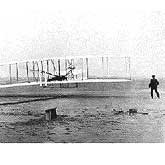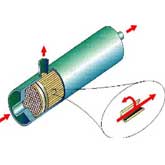More Engineering Facts
Automation:
Breakthroughs:
- X-Ray Astronomy vs. Medical X-Rays
- A New Twist on Fiber Optics
- Bicycle Chain for Fleas
- Cool Fuel Cells
- Does Anybody Really Know What Time It Is?
- Drip, Drip Water Clocks
- Fiber Optics
- GPS (Global Positioning System)
- Hollywood To The Rescue
- How Can A Bullet-proof Vest Stop A Bullet?
- How We Use Crystals To Tell Time
- Hybrid Cars: The Magic Braking
- Infrared Headphones
- Liquid Crystal Communication
- NASA Hits a Hole-In-One
- New York to London in Less Than Two Hours
- Non-Flammable Fuel?
- Pass the Basalt
- Red Dot Replacing Cross Hairs
- Searing Heat, Little Package
- Seeing In The Dark
- Smoke Detectors
- Space Lasers Keep Earth's Air Clean
Computer Technology:
Flight:
- A Quick Guide To Gliders
- Barn Yard Aeronauts
- Big Boom
- Guide to Propulsion
- High Altitude
- Nothing Backwards About It
- Taming Twin Tornadoes
- The Motion of An Aircraft
- The Night Orville Wright Had Too Many Cups Of Coffee
Fluids:
Inventions:
Materials:
- A Man-made 'Take' on Nature's Style
- Alloys
- Don't Blow A Gasket!
- For Want Of An O-Ring
- How Many Cows Does It Take To String A Tennis Racquet?
- Making Cars Out of Soup
- Solid Smoke
- The Right Stuff for Super Spaceships
- What Are Composite Materials?
Processes:
- Bioinformatics
- Dress Sizes The Scientific Way
- It's A Bird, It's A Plane -- No, It's A Clam!
- X-Ray Images & False Color






